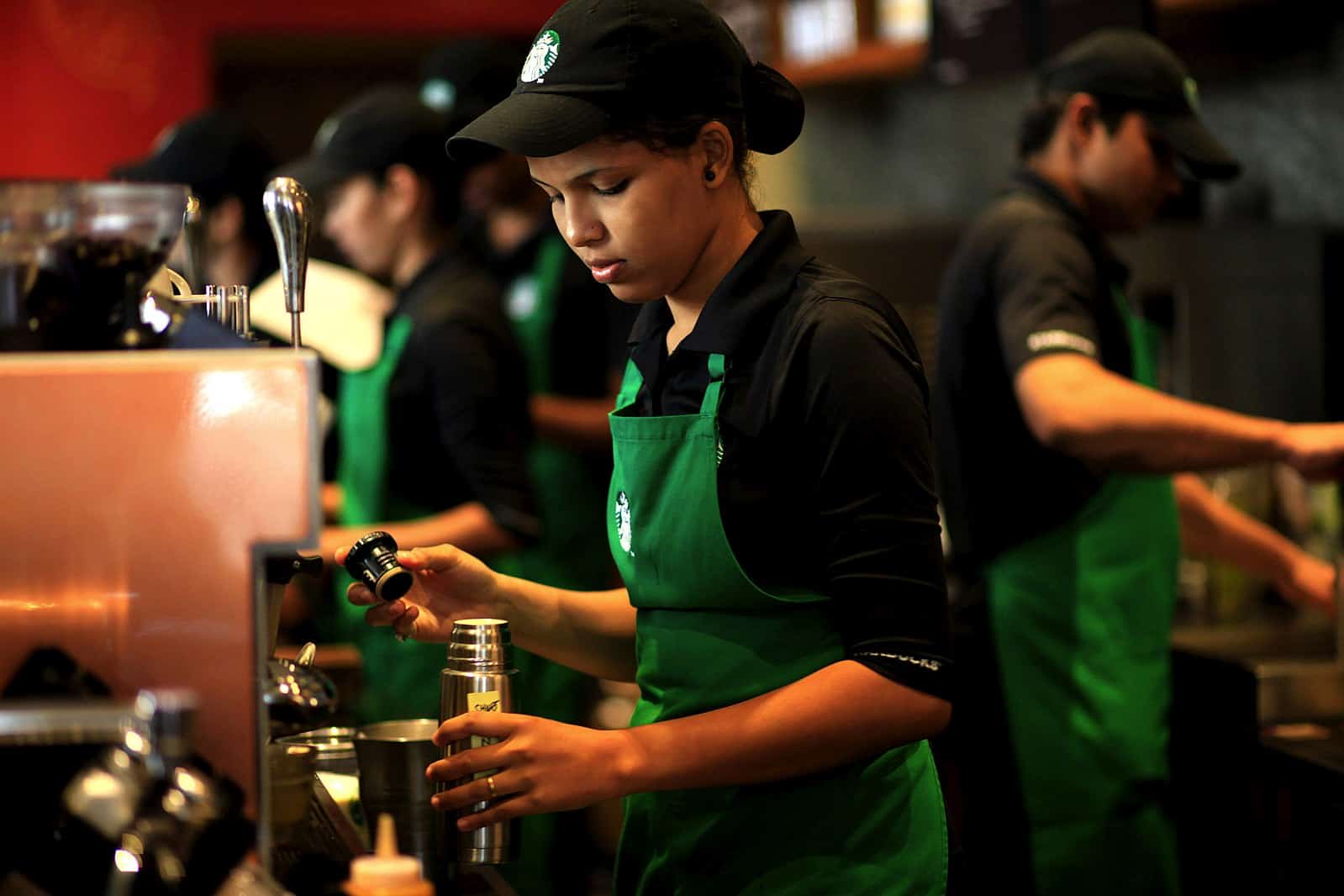William Greenlaw is a student at Harvard Law School.
Union organizers in three more Starbucks in Buffalo, New York, have achieved victory, voting to unionize. This raises the number of unionized Starbucks shops to six, making the recent vote part of the cutting edge of the wave of organizing efforts. The unionization effort has not been without struggle. These three votes were close, 8 to 7, 15 to 12, and 15 to 12. Meanwhile, the company has been accused of stymying the effort deliberately: cutting hours across the country to encourage longtime employees to leave and replace them with newer workers unsympathetic to advertising; pressuring other workers by limiting work availability; and even firing some employees trying to unionize, claiming safety and security policies. In one instance, the company temporarily shut down one store trying to unionize in order to convert it into a training facility and send the workers to other locations. In a statement, the union said, “Starbucks is also using policies that have not previously been enforced, and policies that would not have resulted in termination, as a pretext for firing union leaders.” This has prompted about 20 unfair labor practice charges against the company. The union wave still seems poised to continue. Since December, workers at more than 100 Starbucks in more than 25 states have begun to file for union elections to join Workers United, an affiliate with the Service Employees International Union (SEIU). Later this month, workers in cities as wide-ranging as Seattle, Boston, Rochester, New York, and Knoxville, Tennessee, will be holding similar votes.
Part of this worker strength is connected to the nationwide economics of the labor market. Just yesterday, the Department of Labor reported that employers seasonally adjusted 11.3 million job openings as of January 31st, the second highest in 21 years. For perspective, that is 1.7 jobs for every unemployed American in the country. In other words, every single unemployed worker in the country could return to work and there would still be millions of unfilled jobs. Commentators have suggested that this gap will persist even if labor-force participation fully recovers to what it was before the pandemic. It is also possible that because of increases in people’s paycheck due to current market dynamics, more workers will enter as labor-force participants. Another outcome could be that employers will just have to make due with boosting productivity with the employees they currently have. Either way, the employee-friendly labor-market dynamics appear to be poised to persist for some time.
To highlight continuing gender pay disparities, this International Women’s Day has featured a new UK Twitter account called @PayGapApp. Its rules are simple: “Employers, if you tweet about International Women’s Day, I’ll retweet your gender pay gap 👀.” The data comes from public mandate. In the UK, companies employing more than 250 people must publish wage and salary data broken down by gender. So when the Daily Express UK newspaper posted a story highlighting Gordon Ramsey’s daughter’s IWD celebration, @PayGapApp tweeted. The bot noted that at the Daily Express, women’s median hourly pay is 22.5% lower than men’s. Francesca Lawson, an English copywriter and social media manager, said, “The bot exists in order to empower employees and members of the public to hold these companies to account for their role in perpetuating inequalities. It’s no good saying how much you empower women if you have a stinking pay gap.” Australia and Germany also require companies to report on their pay gaps, but there is no such requirement for businesses in the United States. Here, women’s annual earnings were 82.3 percent of men’s in 2020. Lawson’s perspective perhaps offers a hopeful idea, “The more people who are doing this work, then the fewer places there are for companies to hide.”






Daily News & Commentary
Start your day with our roundup of the latest labor developments. See all
July 4
The DOL scraps a Biden-era proposed rule to end subminimum wages for disabled workers; millions will lose access to Medicaid and SNAP due to new proof of work requirements; and states step up in the noncompete policy space.
July 3
California compromises with unions on housing; 11th Circuit rules against transgender teacher; Harvard removes hundreds from grad student union.
July 2
Block, Nanda, and Nayak argue that the NLRA is under attack, harming democracy; the EEOC files a motion to dismiss a lawsuit brought by former EEOC Commissioner Jocelyn Samuels; and SEIU Local 1000 strikes an agreement with the State of California to delay the state's return-to-office executive order for state workers.
July 1
In today’s news and commentary, the Department of Labor proposes to roll back minimum wage and overtime protections for home care workers, a federal judge dismissed a lawsuit by public defenders over a union’s Gaza statements, and Philadelphia’s largest municipal union is on strike for first time in nearly 40 years. On Monday, the U.S. […]
June 30
Antidiscrimination scholars question McDonnell Douglas, George Washington University Hospital bargained in bad faith, and NY regulators defend LPA dispensary law.
June 29
In today’s news and commentary, Trump v. CASA restricts nationwide injunctions, a preliminary injunction continues to stop DOL from shutting down Job Corps, and the minimum wage is set to rise in multiple cities and states. On Friday, the Supreme Court held in Trump v. CASA that universal injunctions “likely exceed the equitable authority that […]